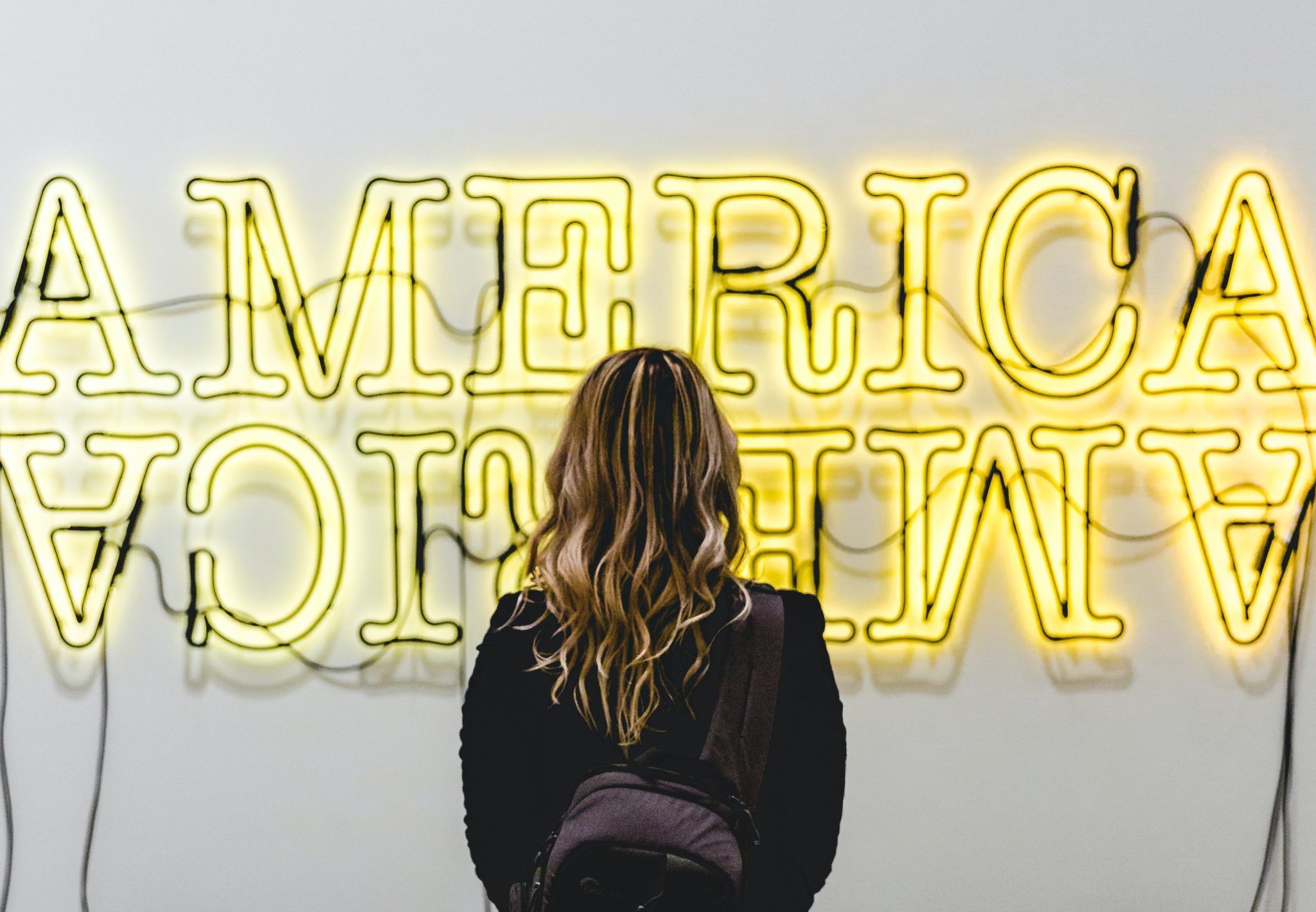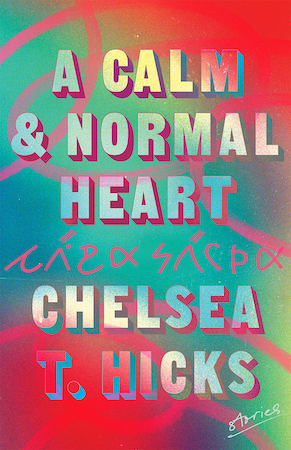Chelsea T. Hicks’s A Calm and Normal Heart is a brilliant and breathtaking debut story collection. While it appears straightforward as a twelve-story collection, these stories and their characters impress upon the reader something longer: a legacy, one that simultaneously stretches back and forward.
In “Tsexope,” between a breakup and a shackup, the main character returns home to find a film crew making a movie on the Osage Murders, but the story itself pushes the history into the present by not just illuminating what might be consequences of that past, but the hope that is required to persevere. The theme of existing as an indigenous person in contemporary America is prevalent throughout, but with a much needed new take. No wonder the second story is called “A Fresh Start”—with great insight, Hicks creates a story that doesn’t “perform” for a white readership but instead creates a story with people who happen to be Indigenous. In each story, Hicks moves beyond the hackneyed tropes of the “performing” Native to offer a collection that won’t only last, but one that will be—should be—required reading.
I honestly can’t remember the last time a book so fundamentally changed the way I think, and I certainly can’t remember the last time a book helped me, as a human being and an Indigenous person, articulate some of the painful truths of existing.
I spoke with Chelsea T. Hicks over Zoom recently, and we discussed authorial intent, the importance of using one’s Indigenous language—for Hicks, that being Wazhazhe ie—and the idea that Native writers must “perform” for readers.
Editor’s note: Click here to watch the video component of the conversation between Chelsea T. Hicks and Morgan Talty about their short story collections A Calm and Normal Heart and Night of the Living Rez.
Morgan Talty: What I love about these stories is that they are furiously unforgiving in that they don’t offer the reader everything: the stories demand that the reader work in unpacking them. I’m so curious to hear if this was intentional? For example, I found myself having to work out the meaning of Wazhazhe ie and consider the implications on the characters and stories.
While writing, I repeatedly asked myself why tribal people are the ones asked to feel like outsiders in literature and on their own ancestral lands.
Chelsea T. Hicks: While writing, I repeatedly asked myself why tribal people are the ones asked to feel like outsiders in literature and on their own ancestral lands. Explaining these characters felt like working to make them acceptable to those who might challenge their very existence. For instance, for years I’ve heard responses to my writing such as, “Ribbon work is not a word,” or “What am I supposed to get out of reading this?” meaning Wazhazhe ie. But these stories take place on the land from which Indigenous cultures and languages emerged. I wanted to say something about the fact that here, in America, Indigenous people are incorrectly situated as minorities. We are not, in fact this is our place, and I want to signal that. When I am a guest somewhere, I know that I can behave with respect and listening, and not expect to have everything pandered to me. To assume so would be incredibly arrogant, like a guest who denotes what knowledge is legitimate and illegitimate, instead of listening and being quietly and respectfully watchful. Understanding everything is not so important to me as showing respect. With these stories, I hoped to signal and question belonging. Who belongs, who is made to feel they don’t, and why is that?
MT: How important was Wazhazhe ie when writing these stories? I feel like as writers, we often approach our work with certain intentions, and I’m curious to know if using the language of your ancestors was at the forefront of your mind?
CTH: I wrote the bulk of the stories while I was teaching at the Wazhazhe language-focused tribal school, Daposka Ahnkodapi, and finishing my low-residency MFA at the Institute of American Indian Arts. After graduating, I edited them while teaching Indigenous second language acceleration courses at the Institute of American Indian Arts. It felt very important to center our language. I want speakers and learners to have the pleasure of reading contemporary literature that reflects what we have going on now. And I want to be one voice helping to normalize Indigenous language writing in the United States. Several years ago, a Niimiipu writer who does translation work for Indigenous writers in Chiapas asked me and a handful of other students, “Why are you not writing in your own languages?” That was Inés Hernández-Ávila, and the question stunned and motivated me. I think the ancestor part of the stories came from my resulting language study. Once I could speak more in the language, I found myself talking to my ancestors a lot, and that inspired me. I also wanted to do something for the kids at Daposka Ahnkodapi, so when they are older, they will have something to read that helps them retain and grow the language they are learning at school.
MT: There are many moments in this collection that tackle ideas around what Native people look like. In “By Alcatraz,” I was blown away when the narrator writes, “[Mary] couldn’t guess the race of the interlocutor by phenotype, but many tiny braids signal that she’s in the category of Black, which makes Mary think that she should be doing something more in the way of presentation to signal that she is Native. But what can she do that isn’t totally offensive to herself?” Could you talk a little bit about the moments like these in your book, where you tackle appearance and blood quantum in ways that both complicate and simplify?
I want to be one voice helping to normalize Indigenous language writing in the United States.
CTH: For appearance and blood quantum, many don’t want to examine their thoughts around the topic because the current ideas benefit them. For instance, the idea of blood quantum can either benefit settlers by making Indigenous people less of a problem by virtue of everyone who is less Indigenous under blood quantum; or it can benefit individual Natives who have a high blood quantum and so think of themselves as more Native. Ideas like blood quantum are very attractive in a society that doesn’t recognize the legitimacy of Indigenous ways and choices. So my job in writing about appearance and blood quantum is to overcome the inherent resistance to the topic. To do this, I dramatized something that people do care about today, and that is signaling. I displaced the typical anxieties of signaling—body image, style, body language—onto belonging. To write small moments like these, I read entire books engaging these ideas, like Native American DNA by Dr. Kim TallBear and One Drop: Shifting the Lens on Race by Yaba Blay. Few will understand why blood quantum is harmful, unless you are able to make your concept as digestible as a TikTok that is as compelling as the harmful idea. For me, the short concept is that Indigenous ways of belonging are a taboo in the dominant culture. That’s why people rely on this idea of blood quantum.
Mary’s new acquaintance Joy, may have Indigenous ancestors by virtue of her ancestral history in the United States, but she isn’t included in an Indigenous community because she has no remaining ties, either to a community on Turtle Island or to an ancestral homeland. So, she gets put into this category called “Black” while Mary’s indigeneity gets erased, though it’s operative. It was pretty much a big challenge to me to evoke and then trouble such complex historical situations like what lead Mary and Joy to meet, and yet not linger on that simply because ideas like blood quantum are still popular, and I don’t want a strategy of antagonizing my readers.
MT: In “Wets’a,” the narrator, when thinking about B’s text, writes, “Why had he never shared his location with me?” This isn’t the first or even last time that the idea of “location” or the act of “being in a space” is introduced. In many of these stories, characters are looking for others or are moving about on their own (or hoping to get away from some place). Was this a deliberate choice? I feel like so much Native literature is set in one place—usually the reservation—and I’m just so curious to know if you were working against that idea to expand the truth about Native people (or, better, specific tribes).
I want to engage popular conceptions, so as to be heard by those whose minds I want to change, yet in engaging misrepresentation my primary goal is to disrupt stereotypes.
CTH: I absolutely wanted to expand the truth about Native people, and I felt I had to write this book so that I could write future ones with more freedom. Before starting this collection, I shopped around a novel, and got feedback from various publishers that the novel didn’t seem like a first book. I took that to mean that my subject matter—an orphan of one of the Osage oil murders getting by in a rez border town—was not familiar enough. Meaning, the story wasn’t one readers recognize, because I hadn’t done the work of opening up Native literature into a wider scope with previous books. Wow, I thought, well, I’d better write something that will help me open this literary landscape up to tell the specific stories I want to—and I’d better help show that Natives aren’t just represented by one type of experience. I agree that it’s essential to depict specific tribes in literature, because there is no “Native” without tribes. I still don’t think a ton of people have heard of my tribe and know our history, even though books and movies about us are coming out now. Recognition is a problem for many Natives, whether enrolled in federally recognized tribes or not. People just don’t know about each of our specific tribes, so they may not believe we’re real, and that each Nation has an entire culture and a language, not to mention an ancestral land base that’s not necessarily on the reservation, and so may comprise diaspora.
MT: This is super generalized, but it has truth to it—I feel like nonnative readers expect Indigenous fiction to “perform” for them, to meet their standards of what Native fiction should be. Right now, there’s a huge surge in Native literature that I feel is challenging this idea that Native work has to cater to nonnative readers. I noticed in your stories—such as “Tsexope” and “My Kind of Woman”—that “performance” or “acting” were common motifs. It’s like you put characters in certain situations that could have expected endings, but they ended in unexpected places. Is any of this something you consciously thought about when writing or revising? Trying to destabilize what we think we know?
CTH: Destabilizing what we think we know might be the single most generative aspect of writing for me. I want to engage popular conceptions, so as to be heard by those whose minds I want to change, yet in engaging misrepresentation my primary goal is to disrupt stereotypes. Native stereotypes are so problematic that I want to totally upend them, not engage them with sincerity. It’s a good trick to use characters who perform—models, singers—because they can refuse to perform stereotypes via their literal performances in music, in fashion. The tension created in performance helps me play with representation in a way that feels complicated and delightful, like playing a challenging game.
I see Native people wanting to be recognizable as Native, too, and I think clothing brands like NTVS and Urban Native Era play with questions of increasing visibility but in a way that is against stereotype. I also wanted to write musicians and brands because I’m just so interested in them and seeing innovative design really gets me going.

